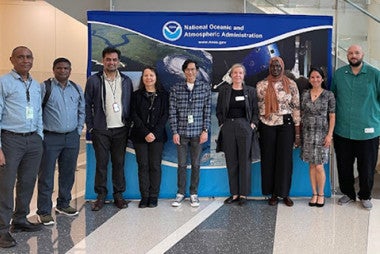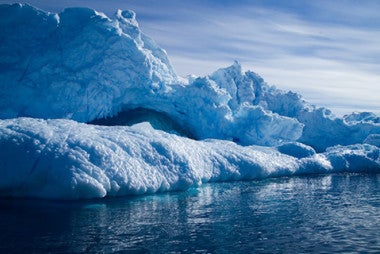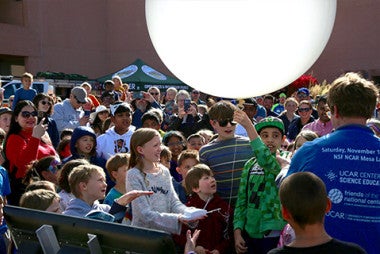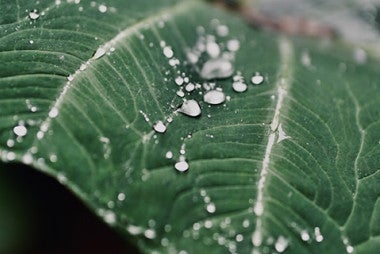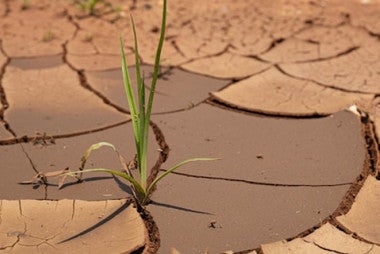Fossils, the Future, and How to Explain it All
As a program, CPAESS is very fortunate to have so many brilliant scientists in our postdoctoral fellowships. Their research truly represents the breadth and depth of Earth system science, but they do so much more than just that.
While NOAA Climate and Global Change fellow Brittany Hupp is working on her postdoctoral research on Utilization of Northern California Current Historical Records for Paleoproxy Development she has also dove into expanding her scientific communications acumen. At the Oregon Museum of Science and Industry (OMSI), Brittany served as a Science Communication Fellow. This opportunity is specifically for “STEM professionals or industry and academic researchers, including faculty, graduate students, technicians, or other individuals in science, engineering, health, or technology related positions (OMSI).” After participating in specialized training, Brittany set up shop to share her passion for climate science with the public.
Science communication is critical for the public to better understand science and see the value of this tremendous field of research which is embedded in every aspect of our lives. Of Dr. Hupp’s experience she shared “Through this, I've worked with the folks at OMSI to create a tabling demonstration for outreach events focused on my research. At the most recent event I participated in, I had over 200 people visit my booth to learn about how we reconstruct past climates.”
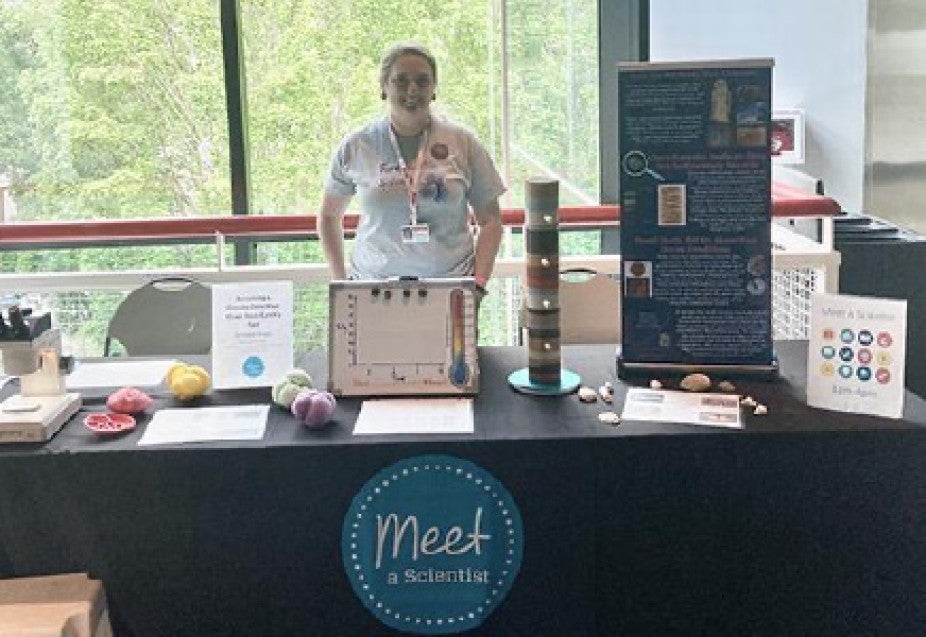
NOAA Climate & Global Change Fellow and CPAESS scientist, Brittany Hupp at a “Meet a Scientist” table at the Oregon Museum of Science and Industry.
Not only was Brittany able to share her science with people visiting the Oregon Museum of Science and Industry, but Washington Public Radio found out about it and spoke to Dr. Hupp about her profession and research. They asked her what we can learn by studying foram fossils of the Paleocene-Eocene Thermal Maximum era, which was about 55 million years ago, when the earth experienced warming similar to today. She explained “It’s a really good analog for modern climate change.” Brittany further clarified that the rate of greenhouse gas emissions today is occurring about 10 times faster than at 55 million years ago. However, learning about what happened to the forams in the ocean then can “help scientists better predict climate change effects now.” Read this fascinating article to learn more about Hupp’s research.
Brittany is a fine example of a NOAA Climate and Global Change fellow and scholar. We are enthused at her efforts to be able to communicate this critical climate science in plain language so that the public can increasingly understand the importance of climate, our relationship with it, and what we need to learn to create a better future for us all.
Learn more about the NOAA Climate and Global Change Postdoctoral Fellowship the UCAR | CPAESS has managed for the past 32 years. Applications for next year’s cohort will be opening up shortly and the deadline to apply will be in January of 2023, so check back on the CPAESS website for this upcoming announcement.


